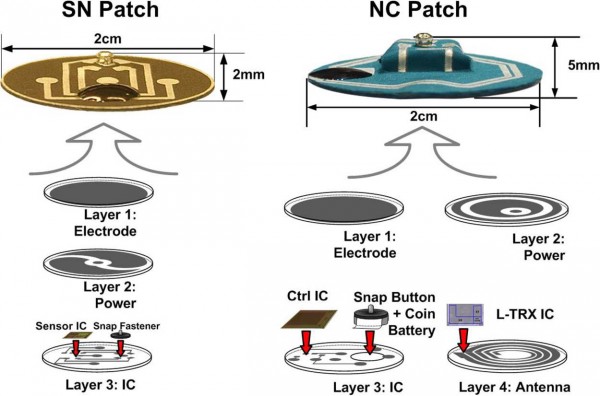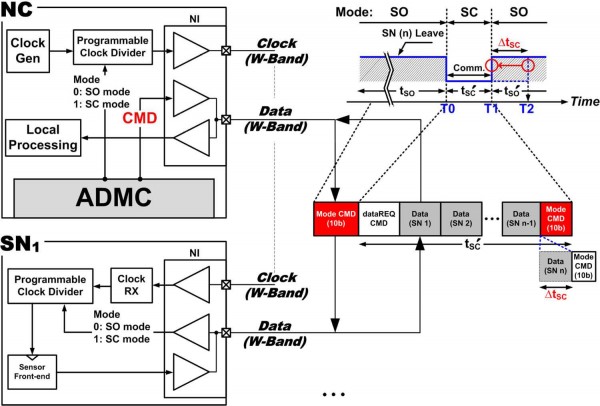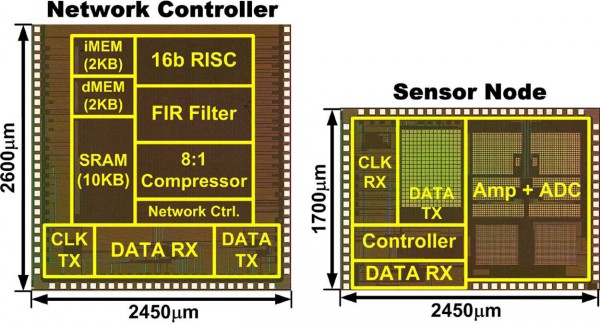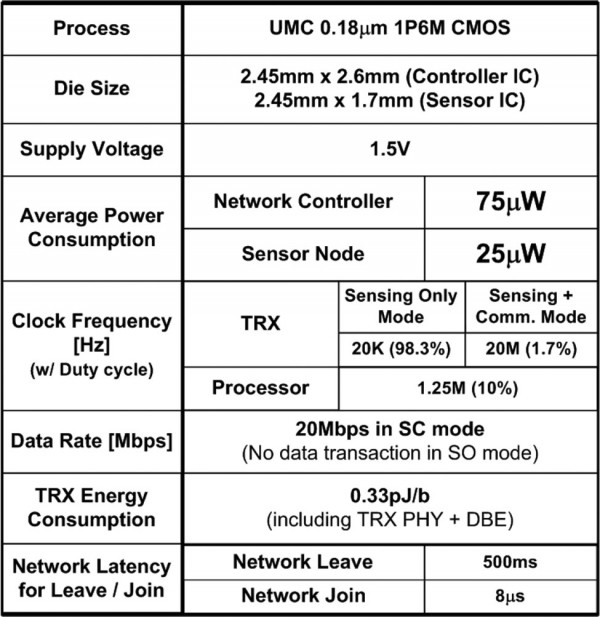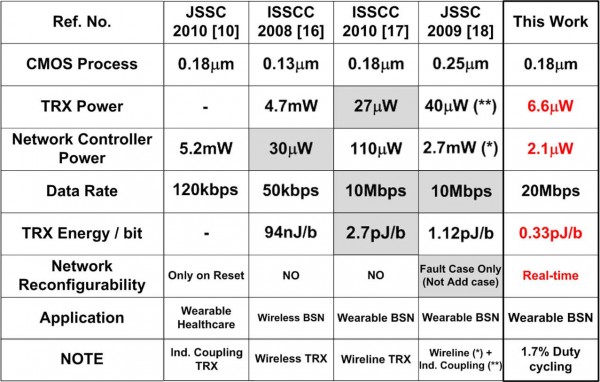Smart Sleep Monitor
본문
Overview
People generally spend almost 1/3 of their lifetime for sleep. Since good sleep is indispensable to the better quality of human life, it has been regarded as one of the important factors for the healthy life in these days. But many people sometimes experience a sleep disorder, which is a medical disorder of the sleep patterns such as sleep apnea, insomnia, narcolepsy, sleepwalking, and so on. Currently, over 40 million American suffer from chronic sleep disorders, and more than 100 thousand motor vehicle accidents result from them annually. Also, its cost has been increased every year so that it amounts to 50 billion dollars in USA in 2010. For effective and primary care for these sleep disorders, its recognition and diagnosis are particularly important.
A light-weighted body area network using 3-layer coin-sized fabric patches is proposed for sleep monitoring systems. It consists of two ICs, a network controller (NC) and a sensor node (SN), and also Wearable Band (W-Band) to connect them. The Continuous Data Transmission (CDT) protocol is proposed for low power and real-time scalability by in-order data transmission using W-Band among several sensors. Based on this protocol, Linked List based network Manager (LLM) and Adaptive Dual Mode Controller (ADMC) in NC, and low swing data transmitter (D-TX) and its own back-end circuits are introduced. The LLM and ADMC can adaptively change the network configuration according to the dynamic network variances in real-time (500 ms), and D-TX can make low energy data transmitter of 0.33 pJ/b with 20 Mbps data rate for W-Band interface. These two low power ICs, which are implemented in 0.18 μm CMOS process and operates with 1.5 V supply, consume 75 μW and 25 μW, respectively.

